Weevils (Otiorhynchus spp.): [Characteristics, Detection, Effects and Treatment]
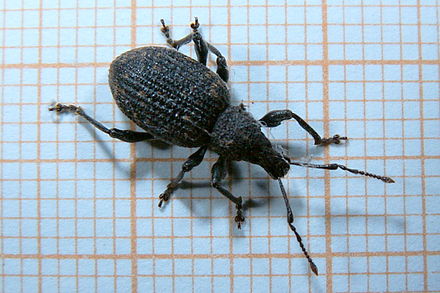
What are weevils (Otiorhynchus spp.)?
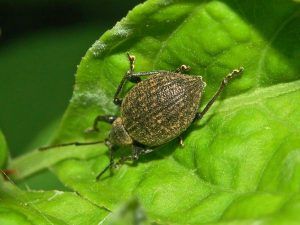 In the extensive family of Curculionidae there are many weevils belonging to the genus Otiorhynchus, which can become a true scourge of many crops, both in the larval stage and as adults.
In the extensive family of Curculionidae there are many weevils belonging to the genus Otiorhynchus, which can become a true scourge of many crops, both in the larval stage and as adults.
Although some 1,500 species of these very small but repulsive beetles have been fully identified, Otiorhynchus sulcatus and O. ovatus are dangerous to many crops around the world when the larvae rampage into a pest that devours leaves with great appetite, as do adult specimens.
This genus apparently originates from the palearctic region of the globe, but some species arrived in an unplanned way to the American continent, where only female specimens have been obtained thanks to the parthenogenetic capacity of these weevils, except for species introduced by man such as the O. meridionalis, O. porcatus.23 and O.ligneus, as well as the best known of all: Otiorhynchus sulcatus.
Some nocturnal species have excellent resistance to biological and chemical pesticides, including their larvae, which is why the damage they cause to horticultural crops around the world is increasing.
There are some indications that climate change, together with the growth of global trade, have helped the growth of this pest, which is increasingly capable of mobilization, because many are polyphagous species, that is, they have the ability to Feeding on multiple hosts, they eat food from a variety of sources.
This favors the rapid reproduction by parthenogenesis of the species, which is increasingly growing, because it is also based on the development of unfertilized female sexual cells.The O. scaber breed has been the subject of many studies to better understand the functioning of parthenogenesis.
How can we identify them?
This beetle is easily identifiable when it invades crops in search of food. Let’s see the most outstanding characteristics of these weevils spread throughout the world.
- The adult beetle is at least 1 cm long. It eats at night and hides as well as possible during the day.
- It is black, with some spots quite visible to the naked eye.
- They have fused elytra or wings and do not fly.
- The larvae are white with a brown head. They do not have legs. They eat from the roots of plants.
- The larvae, in their first stage, will mine the leaves and stems of the plant, but they feed on roots in their second stage or offspring.
- When these larvae of the second clutch attack roots, they reach the crown or neck area of the plant, opening galleries that fill with excrement that attract the proliferation of fungi, which leads to the plant dying later due to rot..
- The adult specimens lay their eggs as soon as spring arrives, an activity that lasts until summer, so the damage they cause to crops for food purposes occurs between autumn and the new spring.
- The adults eat the edge of the leaves, but do not cause significant damage to the plant. Instead, the larvae are very dangerous.
- In many species of this genus, there are polyploid and parthenogenetic type races, but there are also diploid and sexually reproducing ones. while the rest of the races are diploid and sexually reproducing.
What plants are affected by weevils (Otiorhynchus spp.)?
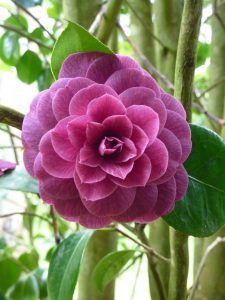 There are many plant species that succumb to the attack of these weevils. Varied shrubs such as Azaleas, Hydrangeas, Camellias, Rhododendrons, Cyclamen, among others, can be hit by these weevils that can easily become a plague.
There are many plant species that succumb to the attack of these weevils. Varied shrubs such as Azaleas, Hydrangeas, Camellias, Rhododendrons, Cyclamen, among others, can be hit by these weevils that can easily become a plague.
In general, varieties of perennial, bulbous and many indoor plants, such as Sedum, Primroses, Impatiens, Fuchsia, Begonias are susceptible to disease due to weevils.
But they also attack Vines, Yews and many other plants that commonly grow in gardens.Moreover, if they attack bonsai specimens they will kill them in a short time.
The same happens with fruit trees such as strawberries and strawberries, which are invaded by strategic attacks of weevils on the crown and roots of the plant.
How to combat weevils (Otiorhynchus spp.)?
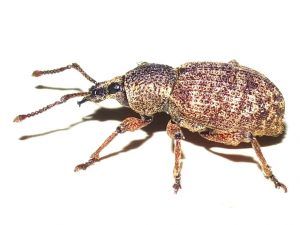 Some actions mitigate the invasion of these weevils. Let’s see.
Some actions mitigate the invasion of these weevils. Let’s see.
Periodic reviews of cultivated plants are very important to make an early detection of adult specimens that arrive in spring.
This must be done at night because they are nocturnal eating habits. Using a flashlight for this tracking will be essential.
These weevils can be manually removed from the plant and if they are caught early, then we will avoid the dangerous laying of eggs.
However, when the larvae have already appeared and manage to infect the roots of the plant, it will be much more difficult to remove or eliminate them, so the application of some systemic product may help, because the larva becomes intoxicated when it eats from the poisoned root system.
A good preventive formula is to use the active ingredient Methyl-pirimiphos in mid-summer or Permethrin.
biological controls
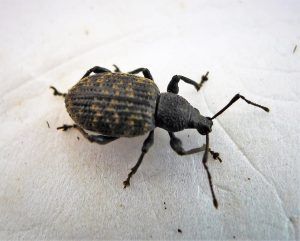 In the case of the species O. sulcatus, biological control of the larvae is a common practice.
In the case of the species O. sulcatus, biological control of the larvae is a common practice.
One of the options is to use entomopathogenic nematodes and entomopathogenic fungi are equally efficient in eliminating weevils as well as other Otiorhynchus species.
Entomopathogenic fungi, especially the type B. bassiana, are used throughout the world for biological control of insect pests.
The growing medium can be mixed with entomopathogenic fungi when planting plants the entomopathogenic fungi are directly on the plant or applied soil .
Although the effect of entomopathogenic fungi on insects is good, so far little is known about their persistence, distribution and influence.PreFeRal® WG and GranMet-P® can be used, as well as bassiana, Isaria fumosorosea that contain Naturalis®, when it comes to controlling the pest by biological method.
What are the best products to eliminate weevils (Otiorhynchus spp.)?
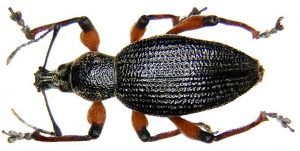 NEMATOP, produced with the active component Heterorhabditis bacteriophora, very effective in eliminating larvae and pupae.
NEMATOP, produced with the active component Heterorhabditis bacteriophora, very effective in eliminating larvae and pupae.
It must be applied with the help of spray equipment, either by injection or by the drip irrigation method.
It is convenient to throw it between the end of March and the end of May, so that the larvae are exterminated, since they reproduce during the winter.Spraying should also be done between the months of August to October, to eliminate the larvae that formed during spring spawning.
However, it must be kept in mind that Otiorhynchus species can react differently to pesticides and has its own phenology.That is why it is vitally important to identify the species that attacks the crop, so that the control strategies are effective.

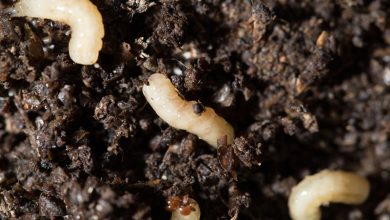
![Photo of False Turnip Caterpillar (Athalia colibri): [Characteristics, Detection, Effects and Treatment]](https://www.complete-gardening.com/wp-content/uploads/2022/08/false-turnip-caterpillar-athalia-colibri-characteristics-detection-effects-and-treatment-390x220.jpg)

